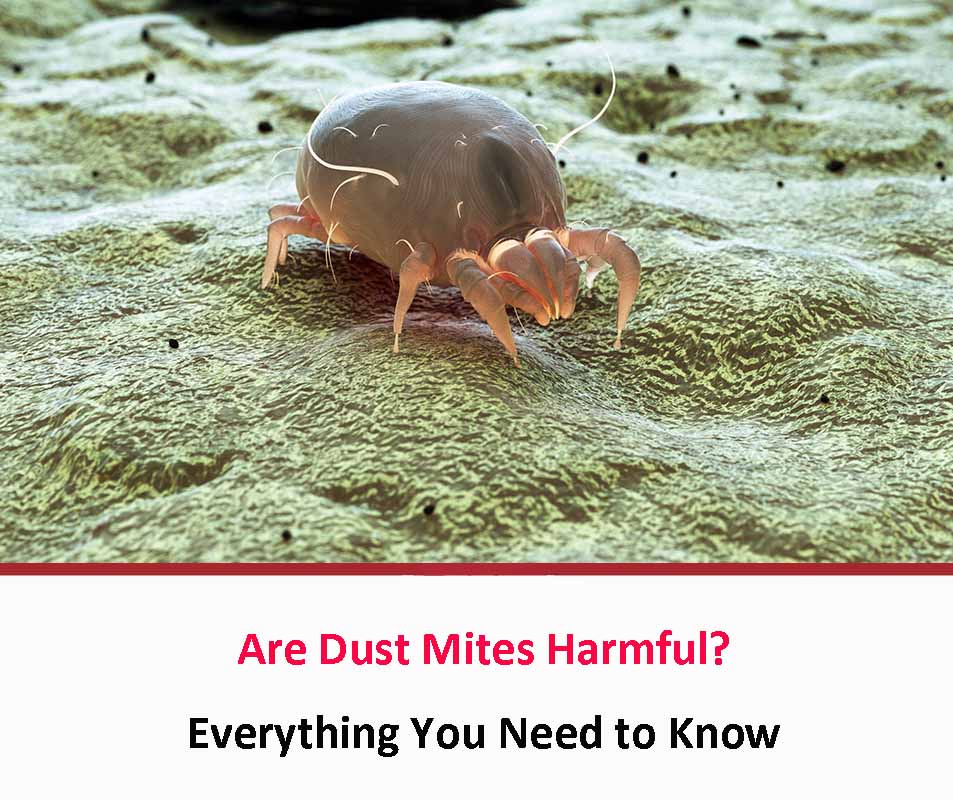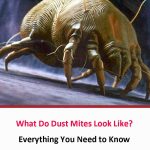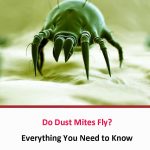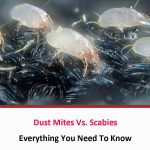Dust mites are the most common insects that you would find in almost every house. These tiny creatures are not visible to the naked eyes. And people can only see them through a microscope. These mites usually feed on dead skin cells of humans and pets.
They are more likely to favor the dark and moist places to hide, where they can get food sources quickly. That’s why these microscopic creatures are primarily found in mattresses, beddings, rugs, carpets, curtains, clothes, and the couch in your home.
So, if you are wondering whether dust mites are harmful or not? So keep reading because here you will find every answer you need to know about these pests below.
Are Dust Mites Harmful?
Contents
Yes. Usually, dust mites themselves are not harmful to human beings and can’t carry diseases. But they can trigger some allergic symptoms in humans, especially people living with asthma. You should know that dust mites feed on the dead skin cells of humans, which means they cannot bite.
But their feces and dead mites’ bodies can release allergen particles in the air, causing an allergic reaction to the skin and trigger asthmatic problems.
So, suppose you are experiencing allergic symptoms throughout the year. In that case, it means that your home is infested with dust mites, and you have to take preventive measures to reduce the mite population significantly.
Why Are Dust Mites Harmful To Humans?

Most of you don’t even suspect the infestation of dust mites unless it triggers an allergic reaction to humans. Having exposure to dust mites can cause severe allergic reactions in the body and impact your overall health. As discussed above, dust mites usually don’t impact an individual’s overall health, but in some cases, they can range from mild to severe.
That means you might experience various symptoms like persistent sneezing, facial pressure, congestion, cough, or even an asthma attack.
You should know that people living with asthma are highly sensitive to dust mites, which means having significant exposure to these pests can increase the risk of asthma attacks or flare-ups.
As you already know, these microscopic creatures are not visible to the naked eye, making it easier for dust mites to grow their infestation everywhere they go.
But they don’t affect the overall health of an individual unless they have inhaled plenty of allergen particles. So, whenever you experience frequent sneezing, running nose, and other symptoms, that means your house is infested with dust mites.
Does Everyone Have Dust Mites?
Dust mites don’t fall in the category of parasites which can fly from one place to another. That means they are not likely to be brought by someone. Recent studies have shown that dust mites are usually found in almost every house or at least one bed.
Due to their microscopic size, one cannot suspect the presence of dust mites in their house unless they start to create nuisance and harm you and your loved ones. That means you have to take effective measures to deal with dust mites in your house like steam cleaning, regularly replacing bed sheets, etc., as you cannot eradicate the dust mites.
But you can reduce them significantly with the help of different solutions. You should also know that dust mites can live for a long time without food. Recent studies have shown that most households are likely to be infested by dust mites, but most don’t sense their presence due to their cleaning routine, which reduces the number of dust mites.
So, when you feel their presence, you can make a DIY solution to eliminate the population. All you have to do is spray it over the infected area and let it settle down, and then vacuum it thoroughly.
Is Everyone Allergic To Dust Mites?
Even people who are not allergic to dust mites can have allergic symptoms due to excess exposure to high populations of dust mites. But only a few people are likely to show some allergic reactions which are sensitive to dust mites. You should know that these allergic reactions are similar to allergies caused by tree pollen, ragweed, or cat dander.
That means everyone is irritated by the significant exposure, while only some people are allergic to dust mites. These people include asthmatic patients or someone else having respiratory problems. These pests release allergen particles, which can float for up to two hours in the air.
Apart from this, having their feces and dead mites’ bodies can also trigger other allergic symptoms that can impact your overall health. You should know that the allergen particles of dust mites can settle down into sand or fabrics like upholstered furniture, bedding, or pillows, which work as a perfect infestation place. Most exposure is likely to occur while sleeping.
How Do Humans Get Mites?
Usually, you will find dust mites in every house as they naturally appear in a humid place. You should know that humidity is the most crucial factor for determining whether the home is heavily infested or not. Dust mites usually don’t drink water as they suck up the water vapor in the air.
Also, dust mites cannot survive high temperatures, which means places with low humidity are likely to have few or no dust mites. You should know that dust mites are likely to settle down faster in fabrics, which means people will be affected while sleeping.
Humans can also breathe in allergen particles, which can even worsen their overall health. So, whenever you suspect any symptoms or signs of dust mites, you can consider taking preventative measures to avoid them from growing. It will help in controlling the air quality, which further assists in relieving the symptoms of asthma.
Final Words
Now you know how dust mites are harmful to humans and how to deal with them. So, if you are sensitive to allergen particles, it would be better to keep your surroundings clean to avoid them from impacting your health.






